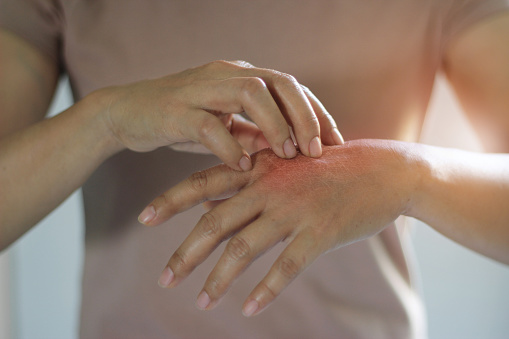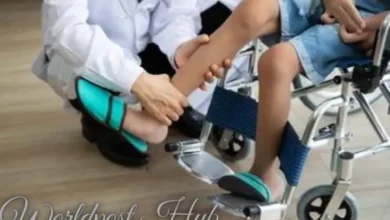Sharp Pain In Knee Cap: Symptoms And Treatment

Knee pain is a common issue that can have a variety of causes. Sharp pain in the knee cap, which is also known as the patella, can be especially concerning and can affect our ability to move comfortably and with ease. It is important to identify the source of this discomfort so that suitable treatment can be administered. In this article, we will discuss what could be causing sharp pain in the kneecap and how it should be managed.
Causes: Age, Overuse, Injury
Sharp pain in the kneecap is a common problem that affects people of all ages. It can be caused by a variety of factors, including age, overuse, and injury. The knee joint is one of the most complex joints in the body and it’s subject to significant wear and tear over time.
Age-related changes in the knee joint can lead to sharp pain in the knee cap. As we get older, our cartilage wears down and becomes less effective at cushioning the bones. This can cause bone-on-bone contact which leads to pain and discomfort. Additionally, as we age our muscles become weaker which can put additional pressure on our knees leading to further complications.
Overuse is another common cause of sharp pain in the knee cap. Athletes who engage in activities such as running or jumping may develop pain due to repetitive stress injuries.
Symptoms: Swelling, Pain When Walking
Sharp pain in the kneecap can be a common occurrence for people of all ages. Knee pain is a symptom of many conditions, such as osteoarthritis, patellar tendinitis, and bursitis. If you experience swelling and pain when walking or moving your leg, it’s important to seek medical attention immediately.
An injury or underlying condition can cause swelling around the kneecap. Additionally, sharp pain that worsens with activity and improves with rest may indicate an issue within the joint itself. It’s important to pay attention to any changes in your knee function and schedule an appointment with your doctor if you’re experiencing any discomfort.
In conclusion, sharp pain in the knee cap accompanied by swelling and difficulty walking can be indicative of various underlying conditions. Early intervention is essential to prevent further damage or complications from occurring.
Diagnosis: Physical Exam, X-Ray
Sharp pain in the kneecap is a common problem that affects people of all ages. The pain can be debilitating and hinder daily activities. This condition can be caused by a variety of factors, including injury, overuse, or a degenerative joint disease such as osteoarthritis. If left untreated, this condition can worsen and lead to chronic knee pain.
To diagnose sharp pain in the knee cap, your doctor will perform a physical exam to assess the range of motion and stability of your knee joint. Your doctor may also recommend an X-ray to get a clear view of the inside of your knee joint. Once diagnosed, treatment options may include physical therapy to strengthen surrounding muscles and improve flexibility, anti-inflammatory medications to reduce swelling and inflammation, or surgery in severe cases.
Treatment: Rest, Ice, Compression
Are you experiencing sharp pain in your kneecap? Don’t ignore it! Knee pain can be a sign of many things, from overuse to underlying medical conditions. The good news is that most cases of knee pain can be treated with rest, ice, and compression.
At Premier Pain Management, we understand the discomfort and frustration of dealing with knee pain. That’s why we offer effective treatment options tailored to your specific needs. Our team of experienced doctors and therapists will work with you to develop a personalized treatment plan that addresses the root cause of your knee pain.
Whether you’re suffering from acute or chronic knee pain, our goal is to help you get back to doing the things you love as quickly and safely as possible. So if you’re experiencing sharp pain in your kneecap, don’t wait – contact us today for compassionate care and expert treatment options.
Prevention: Strength Training, Stretching
Knee pain is a common issue that affects people of all ages. While there are different types of knee pain, one of the most common is a sharp pain in the knee cap. This type of pain can be caused by various factors such as overuse, injury, or poor form during exercise.
To prevent this type of knee pain, strength training, and stretching are two essential components to focus on. Strength training helps to build strong muscles around the knee joint which can provide better support and stability. This can help to reduce stress on the joint and decrease the likelihood of developing sharp pains in the knee cap.
Stretching is also important for preventing sharp pains in the knee cap as it helps to improve flexibility and range of motion. Stretching exercises that target the quads, hamstrings, calves, and IT band can be particularly effective at reducing tension around the knee joint.
When to See a Doctor
If you are experiencing sharp pain in your kneecap, it is important to know when to see a doctor. Knee pain can be caused by a variety of factors such as injury, overuse, arthritis, or degeneration. In some cases, the pain may go away on its own with rest and self-care measures like icing and elevation. However, if the pain persists or worsens over time, it may require medical attention.
Pain management doctors Fort Worth Texas specialize in treating chronic pain that interferes with daily life activities. They will evaluate your condition through physical examination and diagnostic tests such as X-rays or MRI scans to determine the cause of your knee pain. Depending on the severity and underlying cause of the pain, treatment plans can range from non-invasive options like physical therapy or medication management to more invasive procedures like surgery.
Conclusion: Seek Help for Knee Pain
Knee pain is a common problem that many people experience in their lifetime. Injuries or overuse can cause it, and it can range from mild discomfort to severe sharp pain.
If you are experiencing sharp pain in knee cap, it’s important to seek help from a healthcare professional.
One of the first steps in managing knee pain is to visit a doctor who specializes in pain management. These doctors have extensive knowledge and expertise when it comes to treating different types of pain, including knee pain. They can evaluate your condition, determine the underlying cause of your pain, and recommend appropriate treatment options.
In addition to visiting a pain management doctor, there are other things you can do at home to help alleviate your symptoms.





